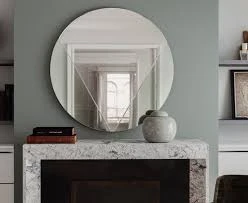

Frosted Glass Automatic The Future of Smart Interiors
In recent years, the concept of smart interiors has captured the imagination of homeowners and designers alike. Among the plethora of innovative materials and technologies emerging in this realm, frosted glass automatic systems stand out as a remarkable fusion of aesthetics and functionality. Combining the timeless appeal of frosted glass with modern automation, these systems provide an ideal solution for privacy, ambiance, and energy efficiency.
Frosted glass has long been cherished for its ability to obscure visibility while allowing soft natural light to permeate a space. This characteristic makes it an excellent choice for applications such as office partitions, bathroom windows, and entry doors. However, the arrival of automatic frosted glass technology takes this traditional material to the next level. By integrating advanced technology within the frosted glass, users can easily switch between transparency and opacity at the touch of a button or through a smart home system.
One of the most exciting aspects of frosted glass automatic systems is their versatility. In residential settings, they can be employed in various ways to enhance both functionality and aesthetics. For instance, homeowners can install automatic frosted glass panels in their bathrooms, providing instantaneous privacy while maintaining an airy, open feel. Similarly, in modern offices, frosted glass partitions can transform collaborative spaces into private meeting rooms at a moment's notice. This flexibility aligns perfectly with the evolving needs of contemporary workspaces, where collaboration and privacy are equally crucial.
In addition to privacy, frosted glass automatic systems contribute to energy efficiency. Traditional window treatments, such as blinds and curtains, can create gaps that allow heat to escape or enter a space. However, with automatic frosted glass, users can optimize light and temperature control effortlessly. By switching to frosted mode during the hottest parts of the day, homeowners can minimize glare and reduce the need for air conditioning, leading to significant energy savings. Conversely, during winter months, revealing clear glass can harness the sun's heat, providing natural warmth to the home.

From a design perspective, frosted glass automatic systems offer a sleek, minimalistic aesthetic that can complement various interior styles. The seamless integration of technology and design creates a sense of modern sophistication. Moreover, customizable options, including different patterns and textures of frosted glass, allow homeowners and designers to make unique design statements that reflect personal tastes.
Safety and durability are also paramount considerations in the design of frosted glass automatic systems. Modern technologies ensure that the glass is not only shatter-resistant but also easy to clean and maintain. Smart sensors can also be integrated to enhance user experience, automatically adjusting the glass based on ambient lighting conditions or time of day. These features align with the broader trend towards creating safer, more sustainable living environments.
As smart home technology continues to evolve, the potential applications for frosted glass automatic systems are vast and exciting. From outdoor spaces where privacy is desired, such as patios or balconies, to its incorporation into high-rise buildings for office use, the integration of this technology is bound to expand.
In conclusion, frosted glass automatic systems represent a significant leap forward in the intersection of design and technology. They offer homeowners and businesses alike a modern solution to the challenges of privacy, energy efficiency, and aesthetic appeal. As we embrace the future of smart interiors, the enduring charm of frosted glass, enhanced by automation, will undoubtedly play a pivotal role in shaping our spaces, providing both comfort and elegance in our everyday lives. Embracing this innovative approach will not only enhance the functionality of our environments but will also redefine how we perceive and experience our spaces—transforming how we live and work.